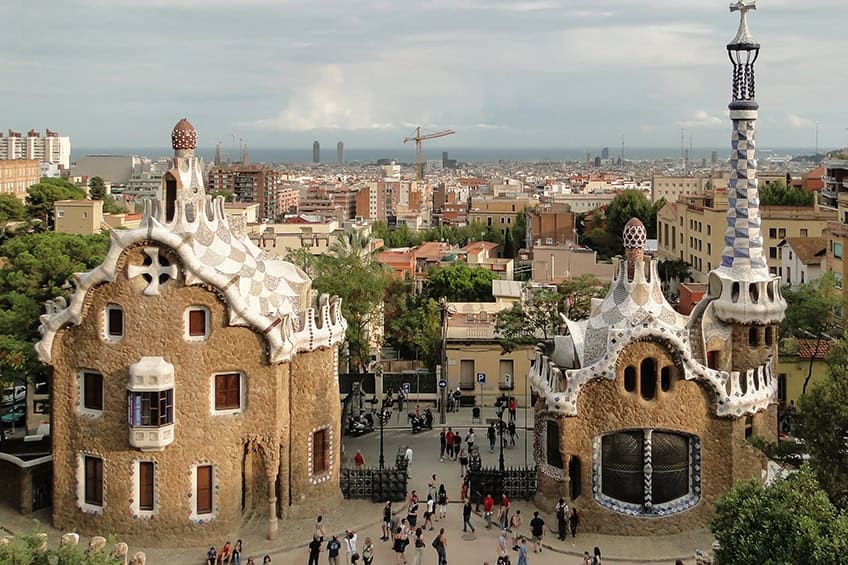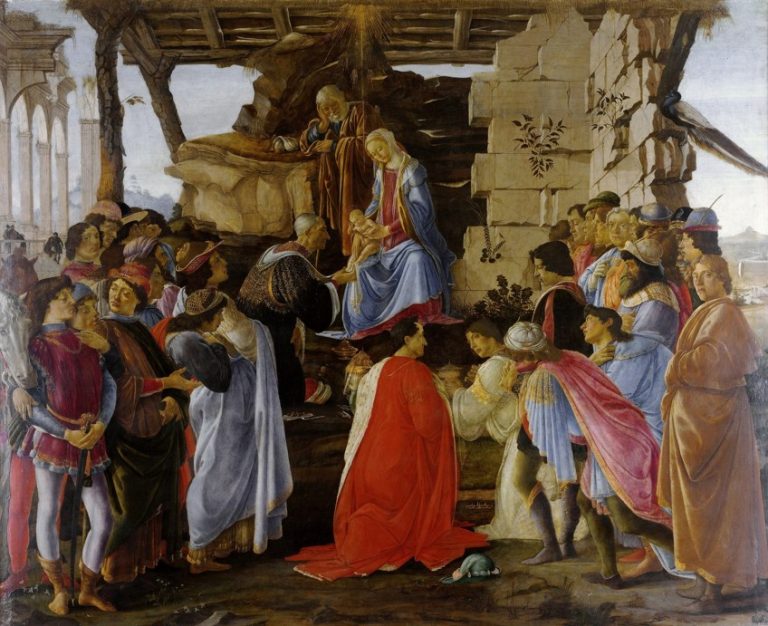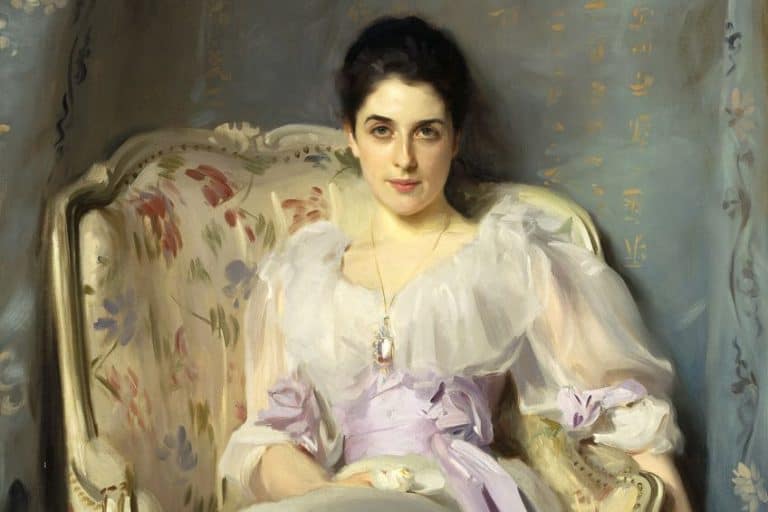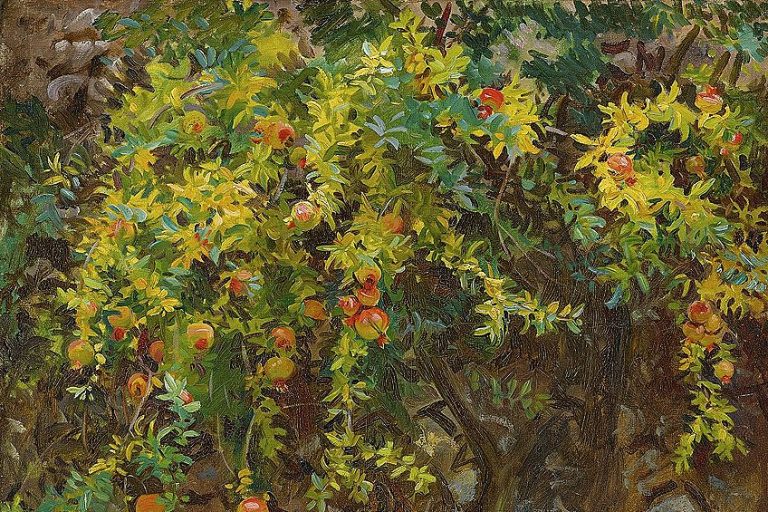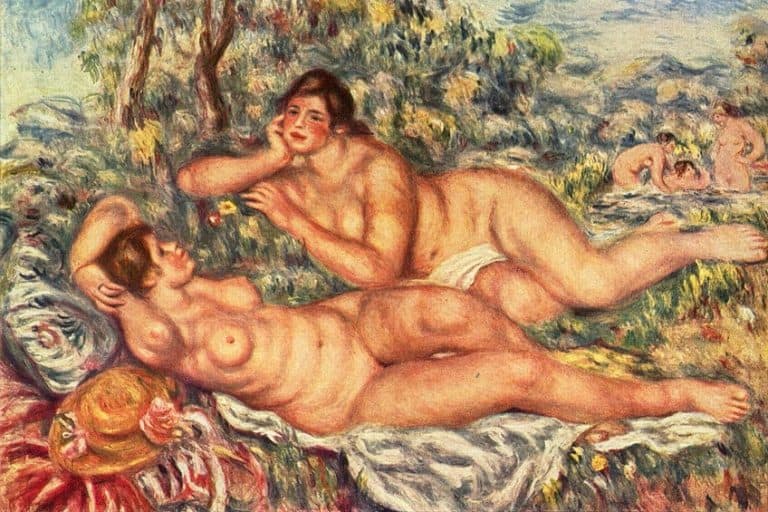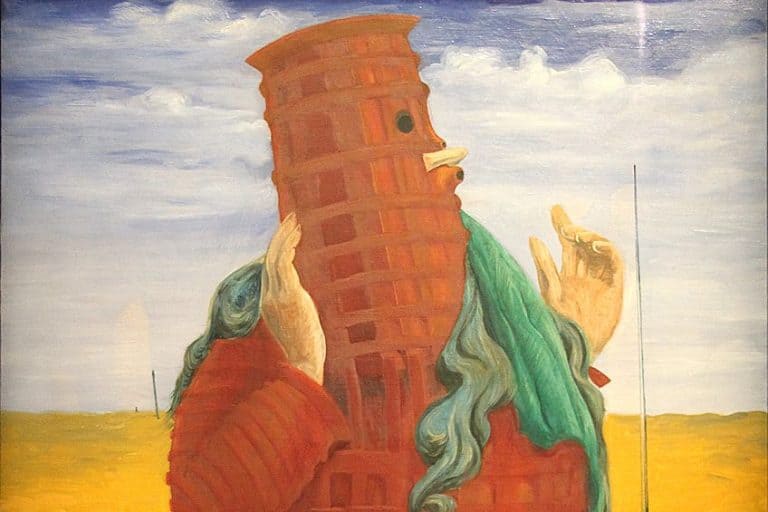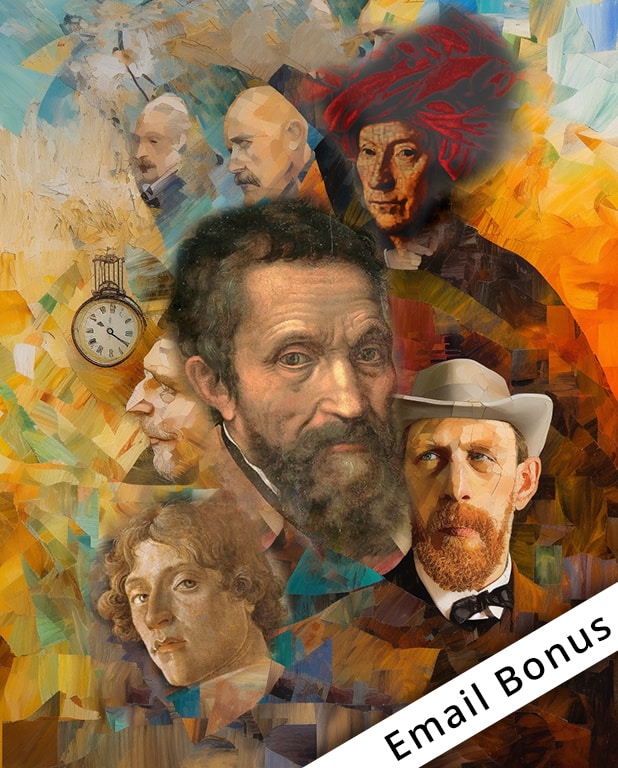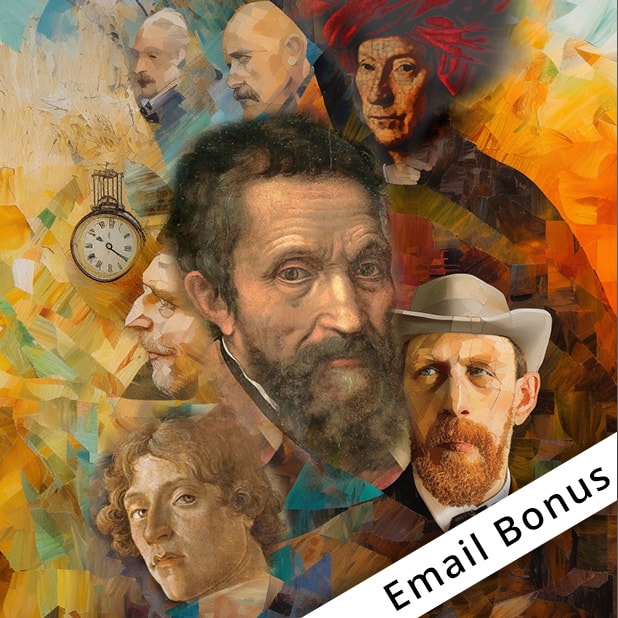Art in Barcelona – Your Essential Cultural Guide
Barcelona is a treasure trove of artistic wonders, bringing together a rich tapestry of cultural influences and historical periods. Visitors are treated to an array of iconic artworks and architectural marvels that embody the city’s artistic heritage. From the towering spires of Sagrada Família to the vibrant canvases of Joan Miró, each work tells a unique story of creativity and innovation. Antoni Gaudí’s masterpieces, such as the whimsical Park Güell and the groundbreaking Casa Batlló, capture Barcelona’s identity as a cradle of modernisme. Picasso’s early works, displayed at the Museu Picasso, offer a glimpse into his formative years in Barcelona, while the MNAC’s Romanesque masterpiece murals showcase the depth of the city’s historical art scene. Beyond museums, Barcelona itself is a living canvas. The Gothic Quarter offers medieval art interwoven with contemporary street expressions, illustrating the city’s dynamic cultural evolution. Each corner of the city invites exploration, promising an encounter with artistic brilliance that resonates locally and globally.
Key Takeaways
- Barcelona showcases a blend of iconic artworks and architecture.
- Gaudí and Picasso’s works highlight the city’s modernisme legacy.
- The city itself serves as an evolving canvas of cultural expression.
The Birthplace of Masterpieces: Barcelona’s Artistic Heritage
Barcelona stands as a vibrant hub of artistic expression. This city, rich in history and culture, has nurtured countless artists across the centuries.
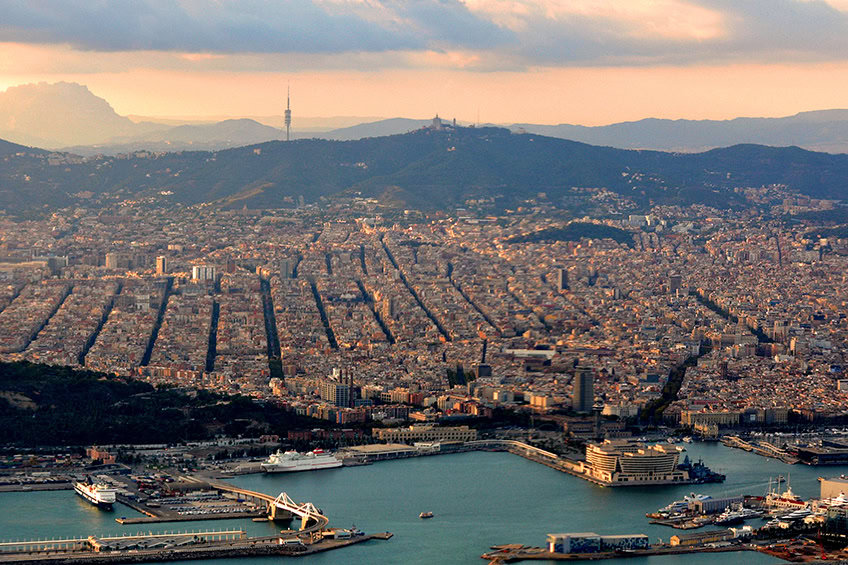
M McBey, CC BY 2.0, via Wikimedia Commons
Antoni Gaudí, perhaps the most iconic figure, left a lasting impact with his distinctive architectural designs. His works, including the spectacular Sagrada Família and Park Güell, attract numerous visitors every year.
Pablo Picasso, although originally from Málaga, spent his formative years in Barcelona. Here, he developed his unique style, drawing inspiration from the city’s cultural melting pot.
The Museu Picasso houses one of the most extensive collections of Picasso’s art. This museum offers insights into his early artistic journey and progression.
Another celebrated artist, Joan Miró, also has deep roots in Barcelona. The Fundació Joan Miró, designed by Josep Lluís Sert, showcases Miró’s diverse creations, ranging from sculptures to paintings.
Barcelona’s artistic legacy is not just confined to these giants. The region fosters numerous emerging artists. Streets filled with galleries and studios reflect an ongoing dedication to nurturing new talent.
The city’s vibrant street art scene adds another layer to its artistic landscape. Murals and installations can be seen throughout neighborhoods like El Raval and Poblenou, proving art flourishes both in traditional and modern settings.
The National Art Museum of Catalonia further cements Barcelona’s reputation as an epicenter of art. It holds a vast collection, from Romanesque to modern Catalan masterpieces, highlighting the city’s rich artistic heritage.
The Magnificent Sagrada Família: Antoni Gaudí’s Unfinished Symphony
Sagrada Família stands as a bold testament to Antoni Gaudí’s visionary genius. Found in the heart of Barcelona, this architectural marvel blends Gothic and Art Nouveau forms in a spectacular display of creativity. The basilica’s intricate facades and towering spires captivate millions of visitors each year.
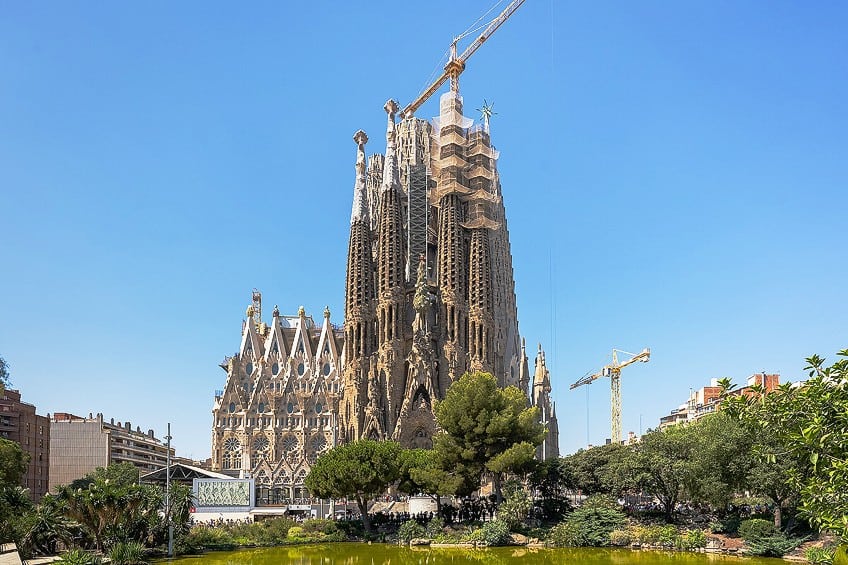
Construction of the Sagrada Família began in 1882, and Gaudí devoted the final years of his life entirely to the project. Although unfinished, it remains one of the most breathtaking structures in the world. The façade is adorned with biblical scenes, each meticulously crafted to convey deep religious symbolism.
Gaudí’s innovative use of natural light inside the basilica is nothing short of extraordinary. He designed columns inspired by tree trunks, creating a forest-like atmosphere. This remarkable interplay of light and structure continues to influence architects worldwide.
The Nativity Façade, completed during Gaudí’s lifetime, is a prime example of his attention to detail. Depicting scenes from Christ’s birth, it embodies Gaudí’s commitment to faith and nature. Meanwhile, the Passion Façade reflects stark, contemporary elements, demonstrating the project’s evolution over time.
Scheduled for completion in the coming years, Sagrada Família continues to be an active construction site, funded through tourism and private donations. When finished, it will feature 18 towers, each representing a significant figure from Christianity, culminating in a stunning central tower dedicated to Jesus Christ.
Bold and imaginative, the Sagrada Família remains a hallmark of Barcelona’s rich artistic heritage, inspiring awe and admiration for generations.
The Surreal World of Miró: Fundació Joan Miró Collection
The Fundació Joan Miró in Barcelona is a treasure trove of surrealist art. Established in 1975, this vibrant museum showcases a vast collection of over 10,000 pieces by Joan Miró, one of Spain’s most iconic artists. The collection features a mix of paintings, sculptures, textiles, and ceramics that reflect Miró’s unique style.
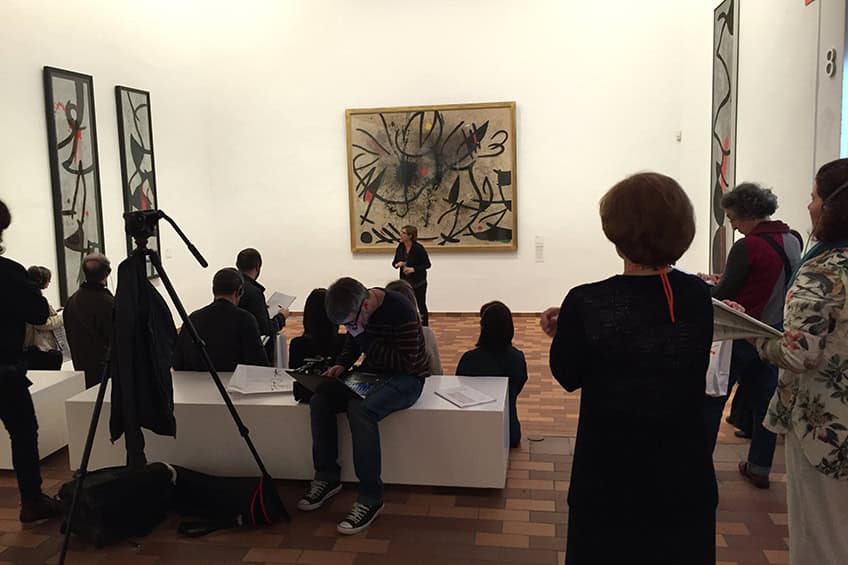
Kippelboy, CC0, via Wikimedia Commons
Miró’s work is characterized by its use of bright colors, bold forms, and imaginative imagery. Visitors can experience the dynamic energy of his art, which often incorporates symbols and elements from nature, Catalan folklore, and his inner world.
Significant pieces in the collection include The Morning Star, a stunning example of his dreamlike approach to painting. Other works, like Woman and Bird, display his ability to blend abstraction with recognizable figures in a surrealist context.
The design of the museum itself, created by architect Josep Lluís Sert, complements Miró’s artistic vision. The airy, white space allows natural light to illuminate the art, enhancing the vibrant colors and surreal forms. The building is an integral part of the experience, reflecting the same innovation present in Miró’s work.
Beyond the permanent collection, Fundació Joan Miró hosts temporary exhibitions that further explore surrealism and contemporary art. These displays offer additional insight into Miró’s influence and the wider art movement.
Picasso’s Formative Years: The Museu Picasso
The Museu Picasso in Barcelona offers a comprehensive look at the early development of Pablo Picasso. Situated in five adjoining medieval palaces, it houses one of the most extensive collections of the artist’s work.
Picasso spent his formative years in Barcelona, where he honed his skills. The museum emphasizes this period, showcasing works that highlight his artistic evolution. It includes paintings, drawings, and ceramics.
Key Highlights:
- Las Meninas: A series of 58 paintings inspired by Diego Velázquez’s masterpiece.
- Science and Charity: An important work from his realism phase.

Among the exhibits, visitors can find pieces from his Blue Period, which demonstrate his shift towards more emotional themes. This era was marked by somber tones and introspective subjects.
Located in the heart of the city, the museum’s architecture itself is part of the attraction. Gothic and Renaissance elements mirror the historical backdrop of Picasso’s youth in Barcelona.
Open year-round, it attracts countless visitors who seek to explore the origins of Picasso’s creativity. Not only does it celebrate his early talent, but it also provides context for his later innovations.
The Museu Picasso is more than just a repository of art. It is a gateway to Picasso’s early artistic journey, illustrating how his Barcelona roots influenced his groundbreaking style.
Gaudí’s Visionary Architecture: Park Güell
Park Güell in Barcelona is a masterpiece created by Antoni Gaudí. Originally designed as a housing development, it has since become a public park renowned for its unique architecture. It reflects Gaudí’s characteristic blend of nature and art.
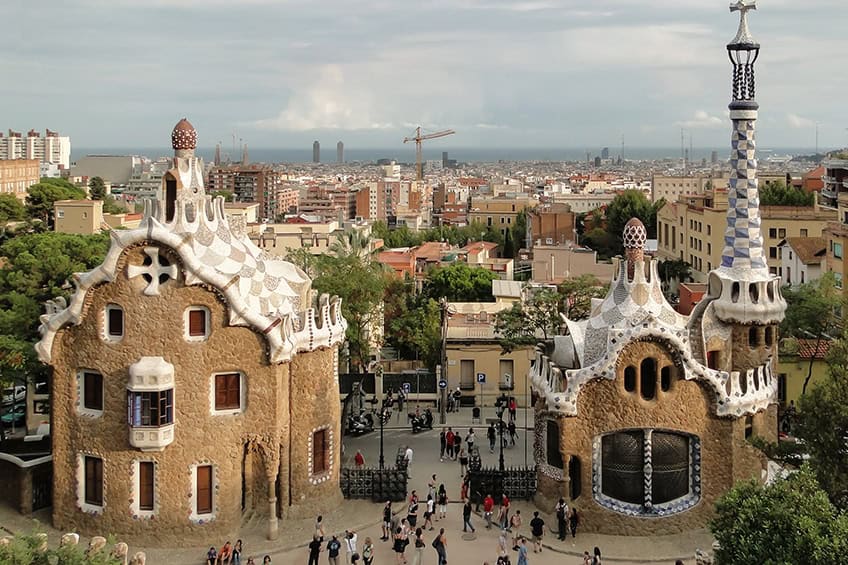
Bernard Gagnon, CC BY-SA 3.0, via Wikimedia Commons
Standing at the entrance are two pavilions adorned with colorful ceramics. The Dragon Stairway, featuring a vibrant mosaic salamander, leads visitors upward. The use of trencadís mosaic is prevalent throughout, showcasing Gaudí’s innovative artistry.
A notable feature is the Hall of One Hundred Columns, which actually contains 86 doric columns. This structure supports the large terrace above, which is lined with a serpentine bench. The bench is a playful and ergonomic feature, carefully designed for comfort and aesthetics.
The park offers panoramic views of Barcelona due to its elevated location. Dense gardens intertwined with winding paths provide a natural escape from urban life. Gaudí’s integration of structural design and natural elements make Park Güell a testament to his visionary approach to architecture.
Visitors can explore various walkways and bridges that merge seamlessly with the landscape. These elements reflect Gaudí’s philosophy of harmony between structured design and the natural environment. Among the park’s highlights is the Casa-Museu Gaudí, where the architect lived from 1906 to 1925.
Park Güell, with its imaginative design and playful structures, remains a significant symbol of Gaudí’s impact on modern architecture. It continues to attract millions, highlighting its status as a must-visit site in Barcelona.
The Legacy of Catalan Modernisme: Casa Batlló
Casa Batlló stands as a quintessential example of Catalan Modernisme, an artistic movement characterized by innovation and fantasy. Designed by Antoni Gaudí in 1904, this architectural masterpiece is known for its organic shapes, vivid colors, and imaginative decor.
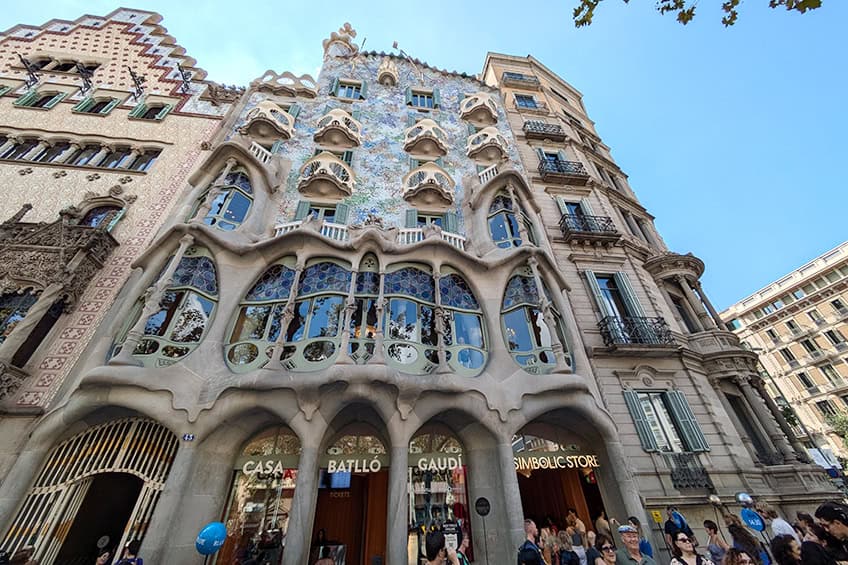
Accurimbono, CC BY-SA 4.0, via Wikimedia Commons
Familiarly called “House of Bones” due to its skeletal forms, Casa Batlló features a facade adorned with broken ceramic tiles, a technique known as trencadís. This design not only highlights Gaudí’s creativity but also embodies the movement’s emphasis on nature and whimsy.
Inside, visitors encounter elegantly curved surfaces, stained glass windows, and intricate woodwork—a testament to the craftsmanship of the time. Gaudí’s attention to detail extends to the smallest elements, making each room a unique expression of Modernisme.
The building’s roof is shaped like the back of a dragon, a common motif in Gaudí’s work, symbolizing a blend of myth and artistry. This iconic form enhances its reputation as a landmark in Barcelona’s architectural landscape.
Casa Batlló is also notable for its sustainability features, incorporating natural light and ventilation well ahead of its time. This aspect reveals Gaudí’s forward-thinking approach and commitment to harmony with the environment.
World-renowned, Casa Batlló draws countless visitors each year, enriching cultural appreciation for Barcelona’s heritage. This location remains a testament to the enduring influence and significance of the Catalan Modernisme movement and Gaudí’s visionary designs.
La Pedrera: A Testament to Gaudí’s Genius
La Pedrera, also known as Casa Milà, stands as a remarkable work by the renowned architect Antoni Gaudí. Located on Passeig de Gràcia, this building is one of Gaudí’s most ambitious creations. Its wavy stone facade and iron balcony designs make it iconic.
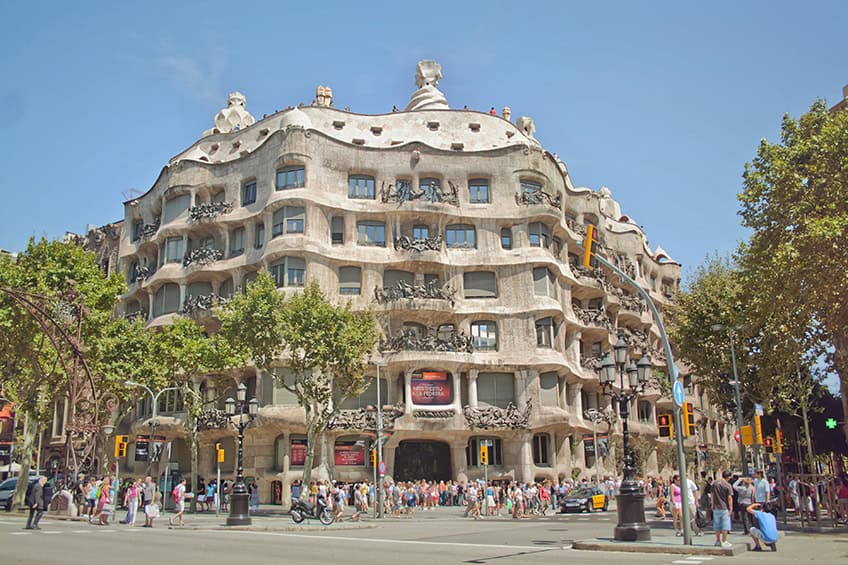
Juanedc from Zaragoza, España, CC BY 2.0, via Wikimedia Commons
Built between 1906 and 1912, La Pedrera was commissioned by businessman Pere Milà and his wife, Roser Segimon. The structure reflects Gaudí’s unique style, without any straight lines and incorporating intricate curves throughout.
The interior of La Pedrera offers no less of a spectacle, showcasing Gaudí’s innovative approach. The roof terrace is particularly impressive, featuring chimney sculptures that resemble warriors. These functional artworks are one of the highlights of any visit.
Today, La Pedrera is a UNESCO World Heritage Site and attracts visitors from around the world. The building houses a cultural center, regularly hosting art exhibitions, concerts, and other events.
For those interested in Gaudí’s architectural style, a visit to La Pedrera provides valuable insights into his creative process and engineering skills. It remains a must-visit for anyone exploring Barcelona’s artistic landscape.
Gaudí’s integration of form and function in La Pedrera continues to inspire architects and artists alike. This masterpiece not only celebrates Gaudí’s legacy but also enriches the cultural fabric of Barcelona.
MNAC’s Romanesque Masterpieces: Murals of Sant Climent de Taüll
The Museu Nacional d’Art de Catalunya (MNAC) in Barcelona hosts an extraordinary collection of Romanesque art. Among its treasures are the murals of Sant Climent de Taüll. These artworks, originating from the small church in the Vall de Boí, showcase remarkable craftsmanship and religious symbolism.
The murals date back to the early 12th century and include depictions of Christ in Majesty surrounded by the Apostles. This central image, known as the Pantocrator, is particularly revered for its artistic and historical significance. It exemplifies the Romanesque style with its bold lines and vibrant colors.
Each mural in the collection offers insight into medieval spirituality and artistic expression. The artwork combines elements of iconography and architecture, reflecting both local traditions and broader European influences. The vivid imagery provided decoration and spiritual instruction for the faithful.
Visitors to MNAC can see the murals alongside other Romanesque masterpieces. These murals are displayed using advanced techniques to preserve their original vibrancy and detail. Through careful conservation, the museum ensures that these artworks continue to inspire and educate future generations.
The Murals of Sant Climent de Taüll remain an essential part of Barcelona’s art heritage. They attract visitors from around the world, who come to admire their beauty and the historical context they represent. This collection underscores the significance of Romanesque art in Catalonia’s rich cultural landscape.
The Vibrant World of Street Art: Contemporary Urban Expression
Barcelona thrives as a hub for dynamic street art, showcasing an ever-evolving tapestry of creativity. The city’s neighborhoods, such as Raval and Poblenou, are renowned for vibrant murals that enliven the urban landscape. These areas serve as open-air galleries, where walls narrate powerful stories through bold colors and imaginative designs.
Street artists in Barcelona often incorporate societal themes into their work. Pieces address topics like climate change, political movements, and social justice, sparking conversation and reflection among pedestrians. These artworks blend aesthetic beauty with thought-provoking messages, solidifying Barcelona’s reputation as an epicenter of insightful urban expression.
Notable figures in Barcelona’s street art scene include local and international talents. Artists such as Joan Miró and Keith Haring have contributed iconic pieces, while contemporary creators continue to leave their mark. These artists transform daily urban encounters, inviting even the most casual observer to engage.
Art festivals such as “Barcelona Street Art Festival” further emphasize the city’s commitment to this burgeoning movement. These events attract artists and tourists, providing a platform for emerging talents to display their work and engage with the public. Live demonstrations and panel discussions are highlights of these gatherings.
The versatility of street art allows for a unique blend of techniques and mediums. From spray paint to stenciling, the use of different textures creates an eclectic mix that defines Barcelona’s streets. These artworks are not just limited to walls but also include installations and sculptures.
Barcelona’s Gothic Quarter: A Canvas of Medieval Art
Barcelona’s Gothic Quarter, or Barri Gòtic, is a testament to the city’s rich medieval heritage. Wandering through its narrow, cobbled streets feels like stepping back in time to a place where history merges seamlessly with art. The district features a blend of architectural styles spanning from the 14th to the 16th centuries.
Barcelona Cathedral, standing at the heart of this quarter, exemplifies Gothic architecture at its finest. Its grand facade, intricate gargoyles, and a serene cloister captivate visitors. Inside, the high ceilings and stained glass windows enhance the cathedral’s majestic atmosphere.
A short walk away, the Placa del Rei invites curiosity with its historical relevance and artistic details. Encircled by medieval structures like the Palau Reial Major, this square encapsulates the essence of medieval Catalonia.
The Basilica de Santa Maria del Pi is another gem in the Gothic Quarter. Its austere exterior contrasts with its breathtaking rose window and vaulted interior. Known for its impressive size, this Gothic church showcases Barcelona’s architectural prowess.
Hidden within the labyrinthine alleys, the Pont del Bisbe delights visitors with its neo-Gothic design. This picturesque bridge connects the Palau de la Generalitat with the Casa dels Canonges, adding a romantic flair to the area’s medieval tapestry.
The Gothic Quarter’s artistic and architectural treasures make it a must-see for any visitor seeking the medieval charm of Barcelona.
Artistic Inspirations: Influences from Barcelona on Global Art
Barcelona has played a crucial role in shaping global artistic movements. The city is renowned for its rich artistic heritage and vibrant culture that have influenced artists worldwide.
Antoni Gaudí’s Architectural Wonders:
Gaudí’s creations, such as the Sagrada Família and Park Güell, have inspired architects globally. His unique blend of Gothic and Art Nouveau elements offers a distinctive approach to design and style.
Modernisme Movement:
The Catalan Modernisme movement, with its emphasis on curvilinear forms and intricate details, has left a lasting impression on global design trends. This movement can be seen in various architectural styles around the world.
Pablo Picasso’s Impact:
Picasso spent his formative years in Barcelona. His exposure to the city’s avant-garde scene heavily influenced his artistic development and contributed to the evolution of Cubism. These ideas revolutionized modern art formats.
Joan Miró’s Avant-Garde Techniques:
Miró, another Barcelona native, introduced new techniques in painting and sculpture that were absorbed by artists internationally. His use of color and abstract forms has defined modern abstract art.
Public Art and Urban Spaces:
Barcelona’s integration of public art within urban settings echoes globally. Cities worldwide have adopted similar practices, recognizing the importance of art in public spaces for urban identity and community engagement.
The influence of Barcelona’s artistic legacy continues to inspire artists and creatives across various disciplines, contributing to an ongoing dialogue between local traditions and global art innovation.
Isabella studied at the University of Cape Town in South Africa and graduated with a Bachelor of Arts majoring in English Literature & Language and Psychology. Throughout her undergraduate years, she took Art History as an additional subject and absolutely loved it. Building on from her art history knowledge that began in high school, art has always been a particular area of fascination for her. From learning about artworks previously unknown to her, or sharpening her existing understanding of specific works, the ability to continue learning within this interesting sphere excites her greatly.
Her focal points of interest in art history encompass profiling specific artists and art movements, as it is these areas where she is able to really dig deep into the rich narrative of the art world. Additionally, she particularly enjoys exploring the different artistic styles of the 20th century, as well as the important impact that female artists have had on the development of art history.
Learn more about Isabella Meyer and the Art in Context Team.
Cite this Article
Isabella, Meyer, “Art in Barcelona – Your Essential Cultural Guide.” Art in Context. March 21, 2025. URL: https://artincontext.org/art-in-barcelona/
Meyer, I. (2025, 21 March). Art in Barcelona – Your Essential Cultural Guide. Art in Context. https://artincontext.org/art-in-barcelona/
Meyer, Isabella. “Art in Barcelona – Your Essential Cultural Guide.” Art in Context, March 21, 2025. https://artincontext.org/art-in-barcelona/.


